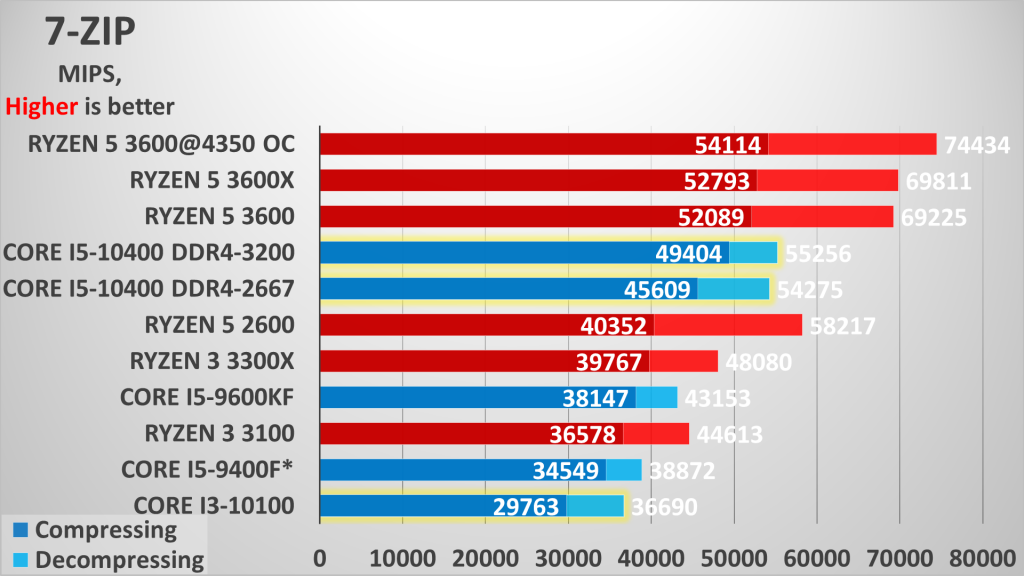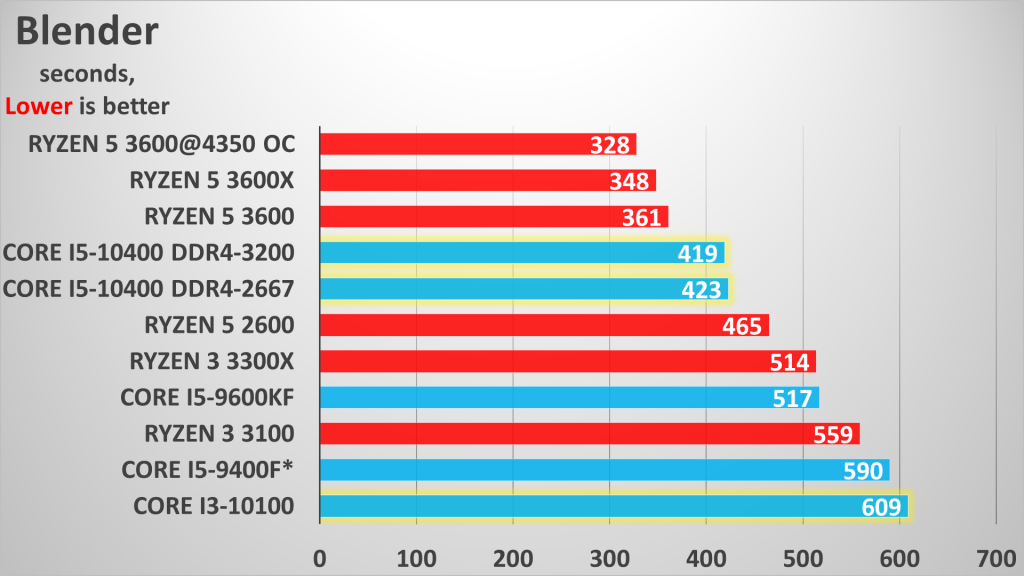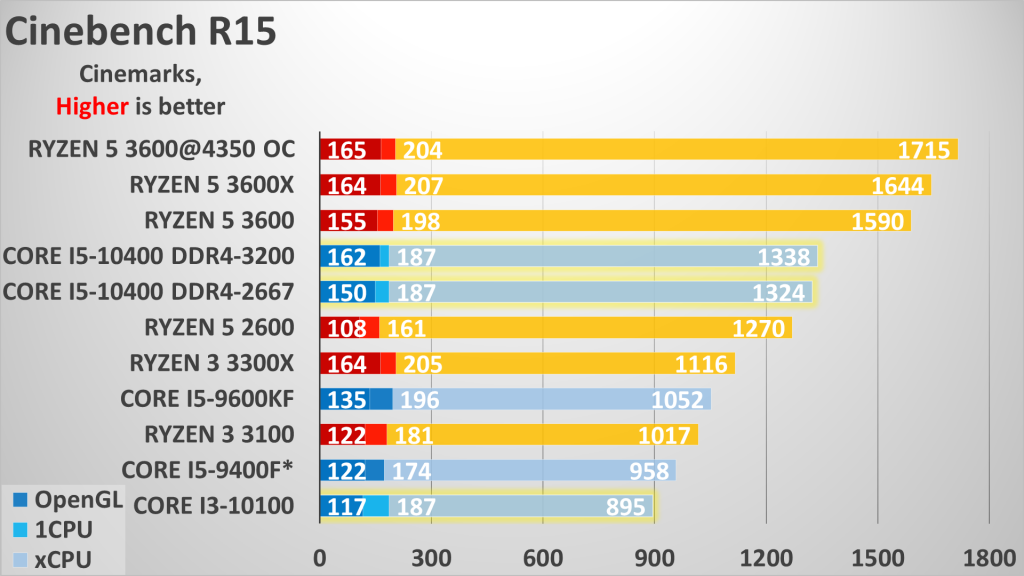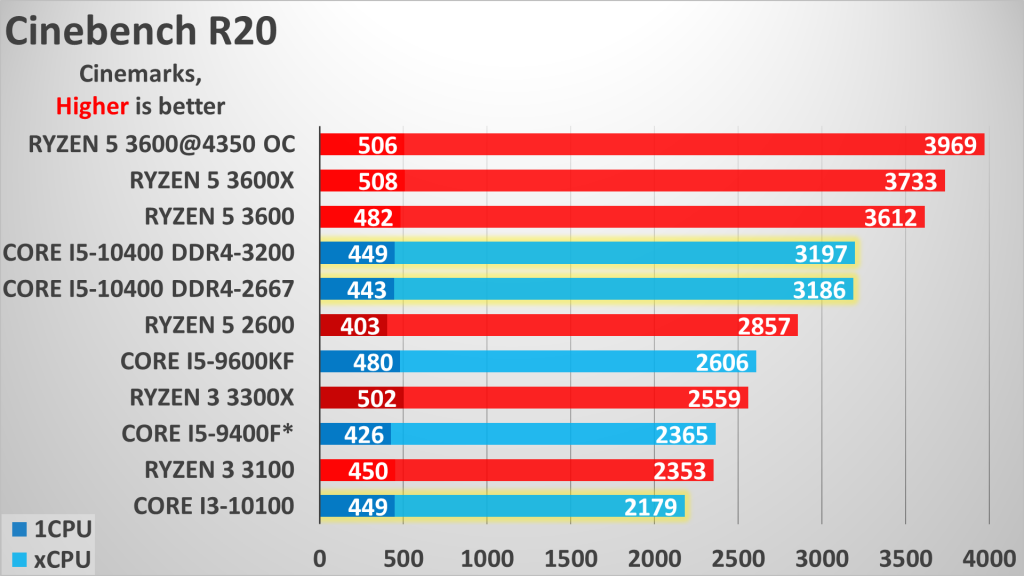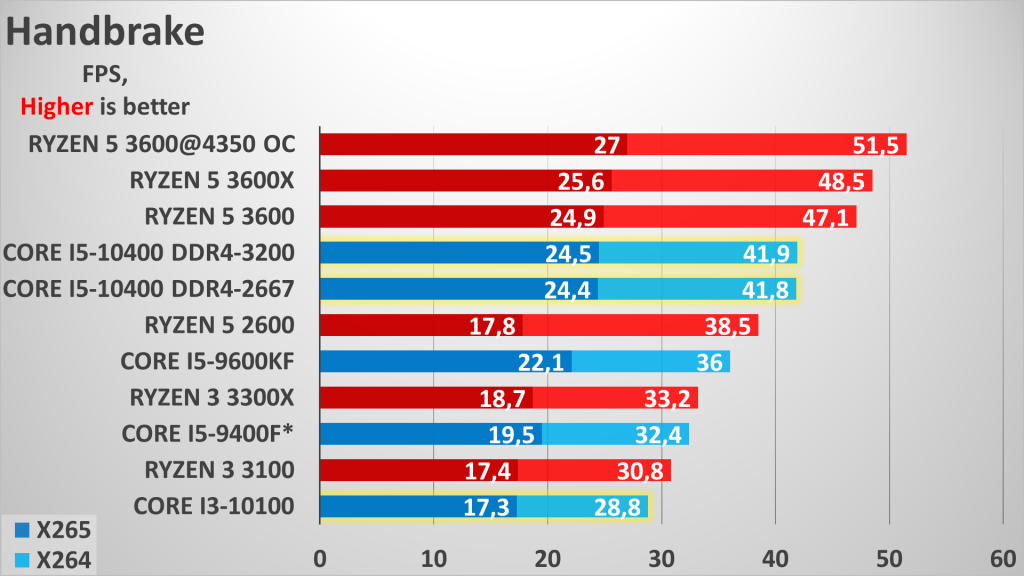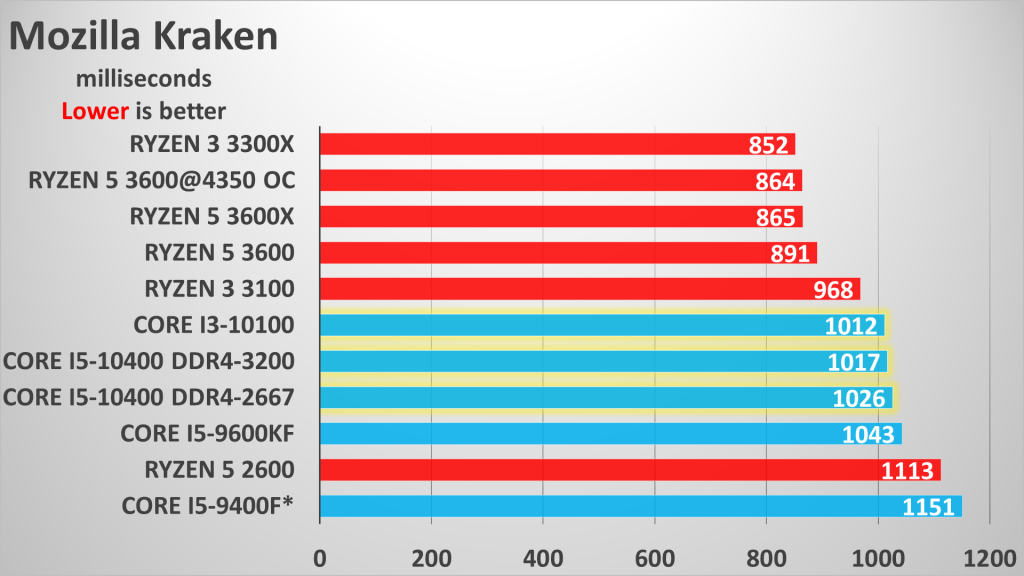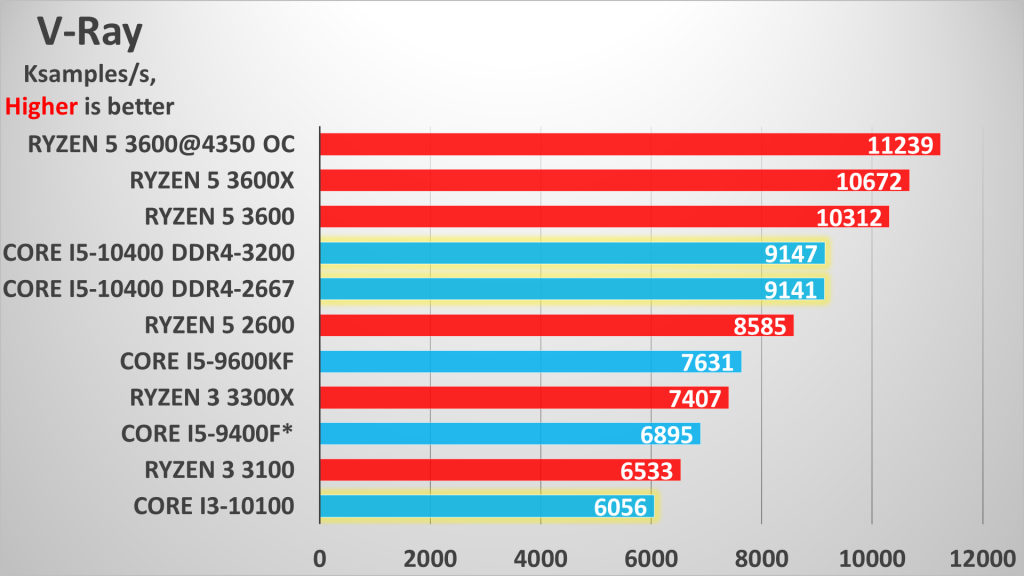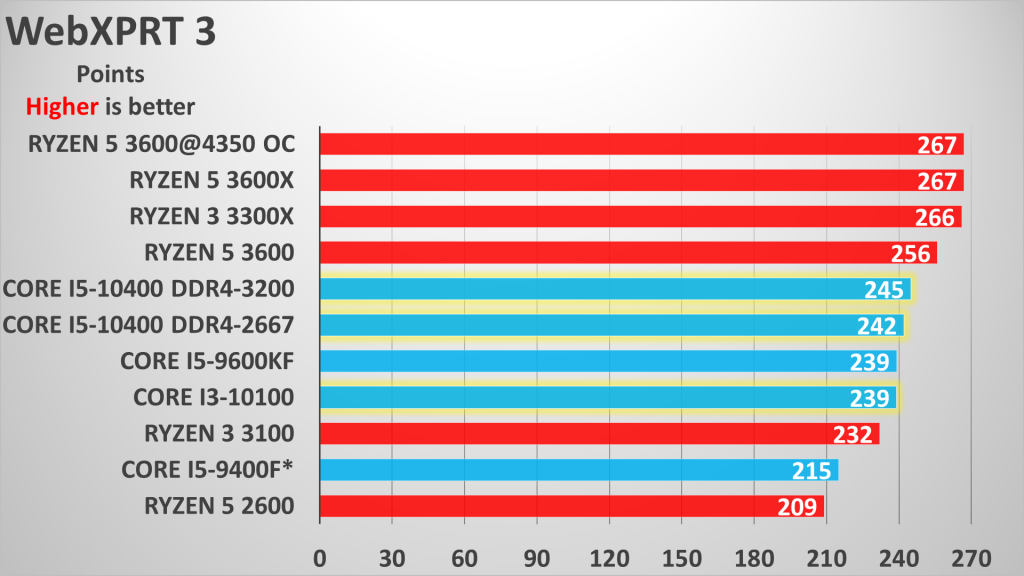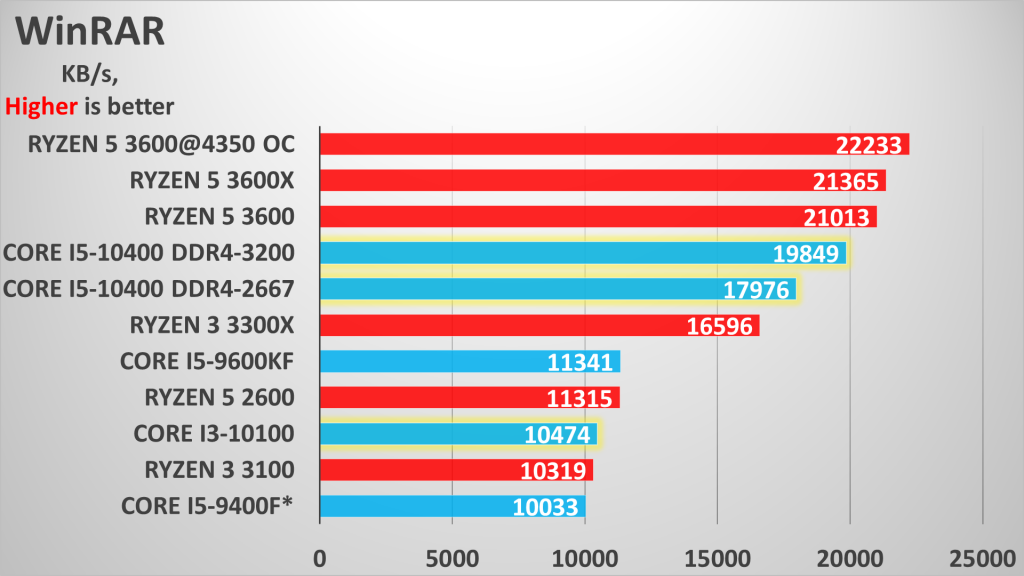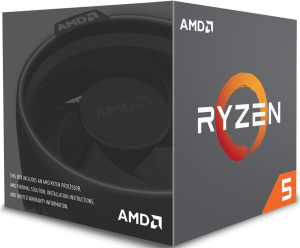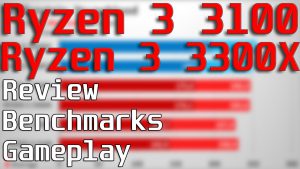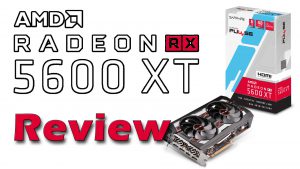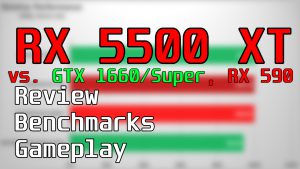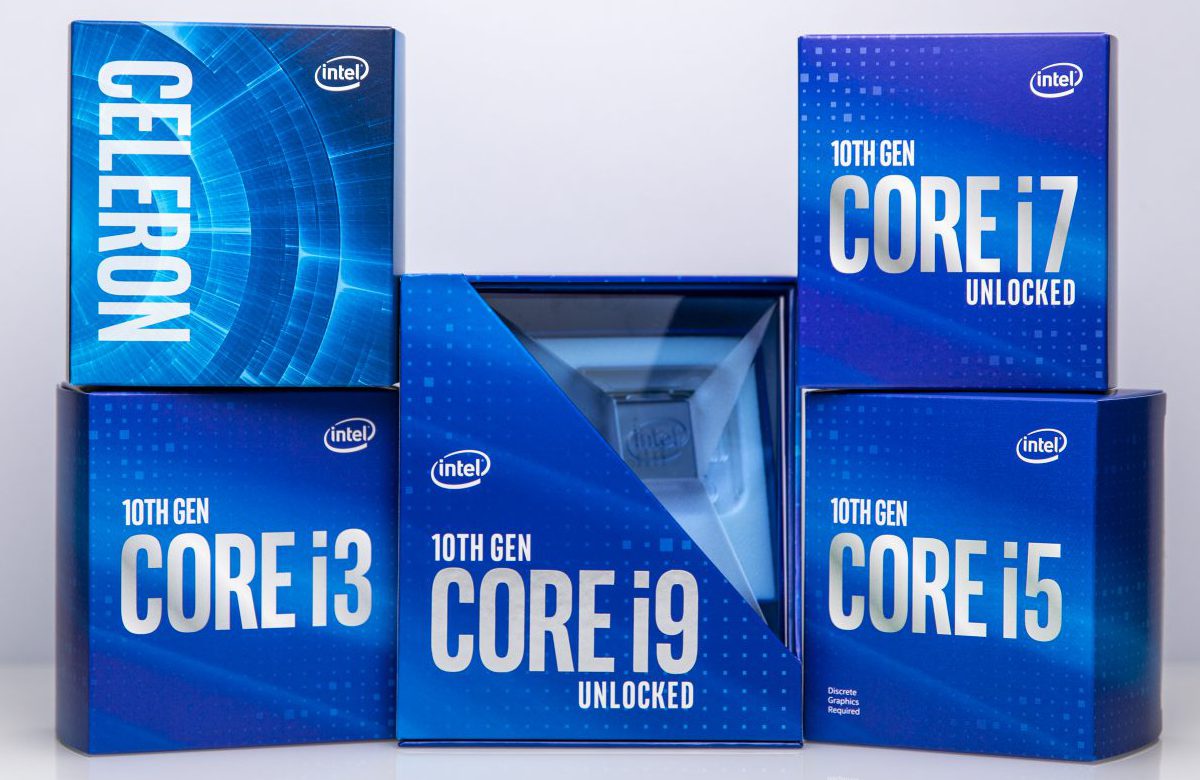
Results
Starting with the application tests, we can already see the big improvement on the multithreaded scores against Core i5-10400 predecessors, courtesy to the Hyper Treading technology. On average we have above 40% improvement against the simulated Core i5-9400F and even against the Core i5-9600KF, with it’s higher clocks and TDP, there is still above 25% improvement. That is nothing to sneeze at, but it still is not enough the combat successfully against Ryzen 5 3600/3600X as they offers 10 to 13 % more performance, mainly due to rendering tests. Still it is a lot less drastic difference in performance than what we saw with the 9th generation Core i5. And 10% can be said to be on the just barely noticeable difference, so quite good performance for the new Intel model. Though, due to the fact that both this processor and Ryzen 5 3600 work on about 4GHz on multicore loads, it still means that AMD models have around 10% better multicore IPC. And finishing with this processor – seems like application performance is mostly unaffected by the memory speed, as on overall there is only 2% faster performance for the DDR4-3200 memory compared to DDR4-2667.
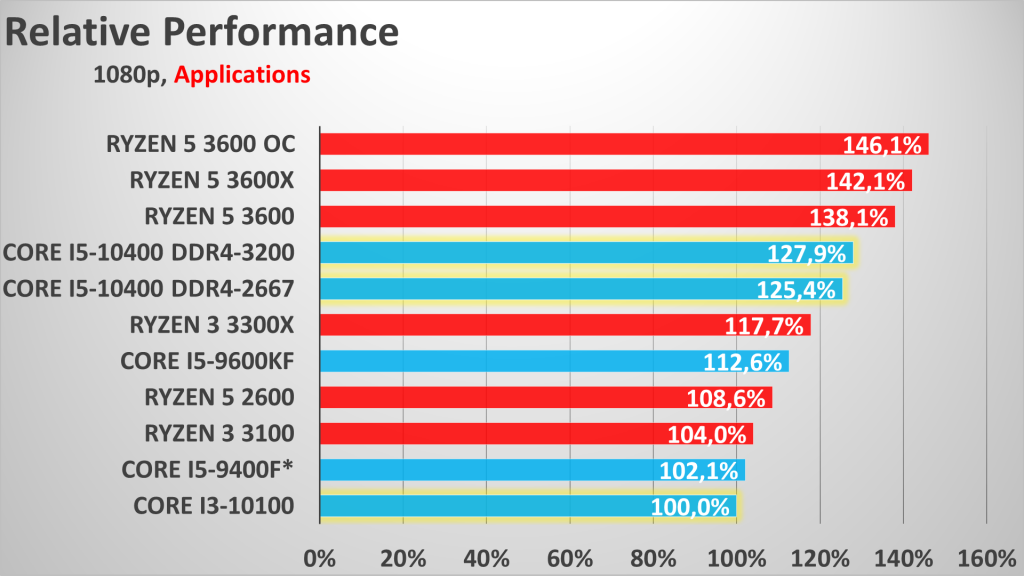
Things however are not so good for Core i3-10100, as it managed to place itself even after the Ryzen 3 3100, with almost identical single threaded performance (about 1% faster) and about 8% lower multithreaded performance. And that is a CPU working 200 to 400 MHz lower. Against it direct competitor situation is quate bad, as Core i3-10100 looses both in singlethreaded tests by more than 10%, but also in multithreaded workloads by almost 25% percent! Not to mention it is worse than the whole Core i5 9th generation series, which we discussed were made irrelevant by the Ryzen 3 3300X. In comparison to the Core i5-10400, we have 4-5% faster single threaded performance, probably due the to the cache difference and about 50% faster multithreaded performance, which is perfectly in line with the 2 more cores.
Finally the overclocking of Ryzen 3 3600 gives just about 6% more performance, which is practically not noticeable.
